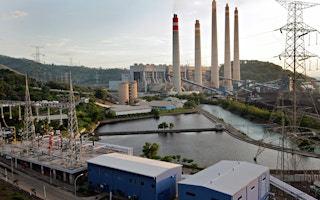Coal currently makes up nearly 40 per cent of Indonesia’s energy mix. Despite green rhetoric from the government, the situation is not likely to improve soon.
That’s because, of the 41 gigawatts (GW) of new generation capacity expected to come online in the country by 2030, 14-16GW is due to come from coal.
And 3.5GW of that is likely to come from coal-fired power plants built immediately next to mines. Such “mine-mouth” plants often use lignite – the lowest quality and least efficient type of coal.
Indonesia has vast reserves of coal. South Sumatra holds 25 per cent of those, or 9.45 billion tonnes. The province’s reserves are mostly lignite and subbituminous coal, according to a report from Indonesian NGO Aksi Ekologi dan Emansipasi Rakyat (AEER), which translates as Ecological Action and People’s Emancipation.
Such low-quality coal leaves a heavy environmental footprint. More is needed to produce the same amount of energy compared with higher calorific coal, requiring more land for mining, and creating more air pollution per unit of energy produced.
“The impact of emissions is high, but not much energy is produced,” said Pius Ginting, executive coordinator of AEER.
According to AEER’s report, readings of several air pollutants, such as SO2, NO2 and PM10, are higher near mine-mouth coal power plants than in settlements outside mining areas. For residents living near these plants, this means a higher risk of upper respiratory tract infections.
Coal, energy goals and the climate
Nearly half of Indonesia’s electricity is generated by coal power plants, and South Sumatra’s coal plays a crucial role.
Indonesia’s government looks at coal as the cheapest energy source, but ignores the fact that continuing to build these coal plants – and in particular mine-mouth plants – clashes with the country’s commitments under the Paris Agreement. In 2015, Indonesia set itself the target of reducing emissions by up to 41 per cent by 2030 with international assistance.
In what sounds like a tall promise, Indonesia’s state-owned electricity company Perusahaan Listrik Negara said earlier this year it would build only renewable energy plants after 2023. First, it will complete the construction of the 35 gigawatts of power projects still in the pipeline. This will include more than 100 new coal-fired plants, including the South Sumatra mine-mouth plants, which will generate greenhouse gases for decades to come.
“Practices that destroy nature and cause climate change must be resisted,” Faisal Basri, an economist from the University of Indonesia, told China Dialogue. “We as citizens have the right to express concern because the government and banks are ignorant.”
He added that the Indonesian government has not fully calculated the damage caused by coal. One possible solution would be for the government to prioritise transformation by producing a more focused energy roadmap, Basri said.
“The banks should finance projects that are environmentally friendly and have a long future by applying the principles of sustainable development, without causing harm to the public at large,” said Basri.
“There are barriers to marketing coal [from] South Sumatra, which is low quality, and transportation routes have difficult access to the sea. These two obstacles could become opportunities for the development of non-coal energy such as geothermal. The direction of energy policy should be towards developing renewable energy,” Ginting said.
This article was originally published on China Dialogue under a Creative Commons licence.








